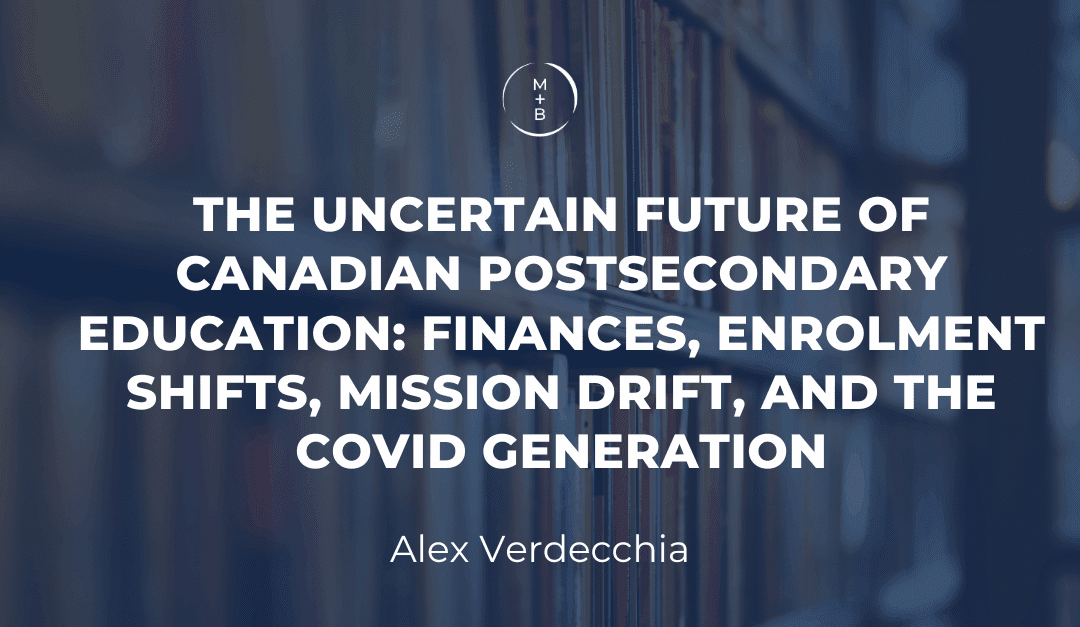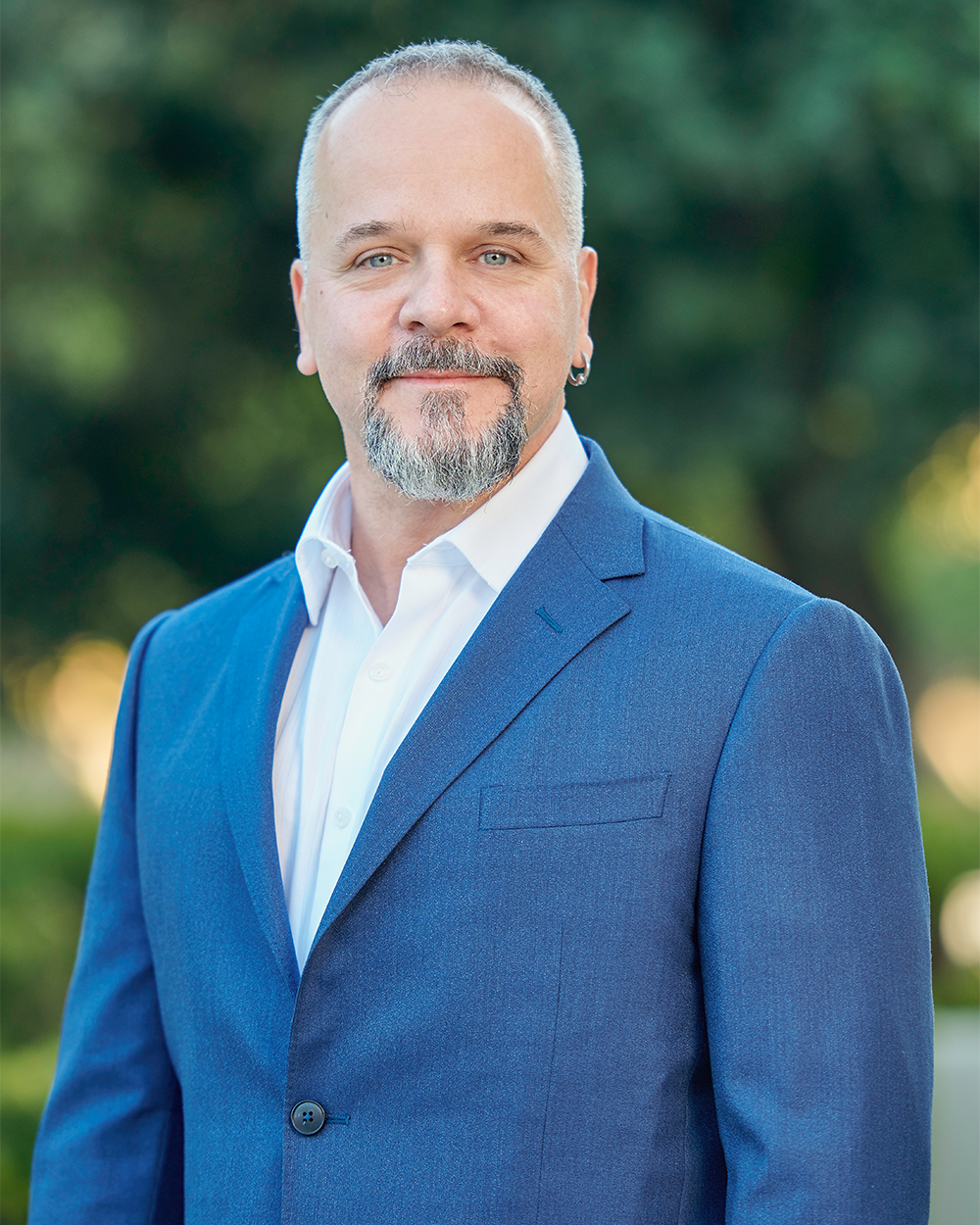For the first time in a decade, overall postsecondary enrolment in Canada is declining. Domestic numbers are falling, while institutions that leaned heavily on international tuition now face tighter budgets after Ottawa’s cap on study permits. These immediate challenges, however, reflect a deeper problem: the sector’s long-term financial fragility, shifting patterns of student demand, and growing uncertainty about its broader mission.
Financial pressures
Public operating grants to postsecondary institutions have, in inflation-adjusted terms, been effectively stagnant for more than a decade. Higher Education Strategy Associates notes that provincial spending has hovered around $20 billion annually since 2011–12, despite rising costs. [1]
To offset the squeeze, many colleges and universities turned to international tuition as a revenue buffer. But that approach has proven vulnerable. When Ottawa capped study permits, the fragility of overreliance became obvious.
The strain is visible everywhere. York University, for example, recently reported a $111 million deficit tied in part to declining international enrolment and has suspended admissions in several programs to reduce costs. [2] Meanwhile, in Ontario and British Columbia, institutions such as Fanshawe and Kwantlen Polytechnic have announced staff cuts in response to declining revenues. [3] [4]
While most institutions are not facing insolvency, these developments underscore the difficult trade-offs now underway: reduced program offerings, hiring freezes, and retrenchments in student services.
Beyond demographics: changing student expectations
The enrolment challenge runs deeper than demographics alone. In many provinces, projections suggest that the 18–24 cohort may stagnate or even shrink in the coming decades, especially in Atlantic Canada and parts of the Prairies. Higher Education Strategy Associates’ To 2038 report shows flat or negative growth in the 18–21 population in several regions, even as Ontario and British Columbia see modest increases. [5]
At the same time, those students who are entering postsecondary are bringing different expectations with them. Interest in shorter, more flexible learning pathways has grown markedly. A 2025 report on Students’ Experiences of Microcredentials in Canada found that offerings have expanded rapidly since 2020 and that students increasingly see them as credible complements to degrees. [6] The Micro-Credentials Impact Report 2024 similarly highlights that many institutional leaders view for-credit microcredentials as part of a larger shift toward modular, responsive education. [7]
Colleges, polytechnics, and private providers, with fewer structural constraints, have often been quicker to adjust to these expectations. Universities, with more complex governance, can find it harder to pivot at the same pace. And while empirical Canadian evidence is still limited, the broader cultural environment, shaped by immediacy and personalization in digital life, likely reinforces student demand for education that is flexible, practical, and clearly tied to outcomes.
Mission at risk
These financial and enrolment pressures feed directly into a deeper question: what is Canadian postsecondary education for?
At its best, the sector provides both career preparation and broad intellectual development. Yet as finances tighten, governments and employers are pressing institutions to align more closely with labour-market needs. In Ontario and Alberta, debates over performance-based funding models have sharpened the focus on graduate employment outcomes. [8]
The incentives are clear: expand programs in areas tied to immediate workforce demand like health care, technology, business, and skilled trades, while scaling back investment in disciplines that appear less marketable. A 2024 HESA report shows that humanities enrolments in Canada have been steadily declining over the past decade, reflecting both student choices and institutional priorities. [9]
The risk is that the broader mission of postsecondary education, cultivating citizens, advancing culture, and sustaining democratic life, becomes overshadowed by narrow training imperatives.
The reinforcing cycle
Finance, enrolment, and mission do not operate in isolation. They amplify one another in ways that create a self-reinforcing cycle.
- Flat public funding and shrinking domestic enrolments have pushed institutions to rely heavily on international tuition. International students accounted for nearly one in five university enrolments nationwide, and far higher shares at some institutions. [10]
- Federal study-permit caps have exposed that vulnerability. In Ontario alone, several colleges and universities have announced staff cuts or hiring freezes in 2025 tied directly to reduced international enrolment. [11]
- Financial instability, in turn, drives program rationalization, prioritizing high-demand, job-linked programs and cutting back in areas perceived as less marketable.
- Reduced program breadth then weakens enrolment appeal, particularly for students seeking broad educational experiences. Statistics Canada reports that humanities enrolments have been steadily declining, reinforcing this shift. [12]
- The result is a cycle that feeds on itself: financial strain accelerates market-driven choices, which reduce program diversity, which in turn can discourage enrolment. Without new funding mechanisms and more flexible program strategies, Canadian postsecondary institutions risk being drawn further into this downward spiral.
The COVID generation
There is another variable that may reshape the sector in ways not yet fully understood: the long shadow of COVID-19.
The incoming Class of 2025 was only 12 or 13 when the pandemic forced school closures and emergency remote learning. We know that COVID had a significant impact on students already in postsecondary education at the time. Statistics Canada reported that nearly two-thirds of students cited negative effects on their mental health, alongside widespread course delays and financial stress. [13] A 2023 study from Queen’s University likewise documented heightened stress, social isolation, and lower academic engagement among undergraduates. [14]
What is less clear is how the pandemic shaped the attitudes of those who were still in middle or high school at the time. Early evidence suggests today’s students may value flexibility, modular credentials, and mental-health supports more strongly, while showing greater skepticism about the cost and quality of long, traditional programs. [15]
It is too soon for definitive conclusions. But if this generation proves less willing to commit to four-year degrees or extended programs, the enrolment and mission pressures already facing the sector could intensify.
Strategic implications
The challenges facing Canadian postsecondary institutions are not simply about tuition caps, demographic shifts, or program mix. They are about how these forces intersect, how stagnant public funding has left institutions overexposed to volatility in international enrolment; how mounting enrolment pressures are intensifying demand for modular, flexible learning; and how financial instability is constraining the institutional mission. These dynamics are not occurring in isolation. They are being reinforced by the cultural and generational aftershocks of COVID-19, which have reshaped student expectations and cast new uncertainty over the future of long-form, traditional education.
Responding will require more than incremental fixes. Three priorities stand out:
1. Restore stable public funding.
With international tuition no longer a reliable buffer, renewed public investment is critical to stabilize institutions and support long-term planning. Without it, universities and colleges will remain stuck in reactive, short-term decision-making.
2. Expand flexible programs, preserve academic depth.
Students want shorter, stackable pathways, but flexibility must not come at the cost of intellectual rigour. Institutions must balance innovation in delivery with a continued commitment to broad, meaningful learning.
3. Reassert the civic mission.
Postsecondary education is more than workforce training. Institutions must actively defend and demonstrate their role in sustaining democracy, culture, and critical inquiry, especially as funding and policy tilt toward market outcomes.
Uncertainty does not have to mean decline. It can be an invitation to rethink. With renewed public investment, more flexible program models, and a clear commitment to their civic mission, Canada’s postsecondary institutions can emerge from this period not just intact, but strengthened, more responsive to student needs, and more grounded in the public good.
The choices made in the next few years will shape more than the balance sheets. They will determine whether Canada continues to offer an education system capable of both preparing students for work and contributing meaningfully to public life. That is the choice now facing institutions, governments, and communities alike, and the opportunity hidden within the uncertainty.
About the Author
Alex Verdecchia, Principal
Alex serves as a Principal at McDermott + Bull Canada and is part of the firm’s Education Practice, based in Vancouver, BC. With over 20 years of experience in executive search, Alex is known for his successful collaborations with clients, sourcing top-tier talent across diverse industries and functions. His core areas of focus include post-secondary education, NPOs, healthcare, professional colleges, associations, and municipalities.
Citations
- HESA, State of Postsecondary Education in Canada 2025
- University Affairs, 2025
- Global News, 2025
- CityNews Vancouver, 2025
- HESA,To 2038
- CAUCE, 2025
- Micro-Credentials Impact Report 2024
- The Conversation, 2020
- HESA, 2024
- HESA, 2024
- Global News, 2025
- StatCan, 2023
- StatCan, 2020
- BMC Public Health, 2023
- Future Skills Centre, 2025


